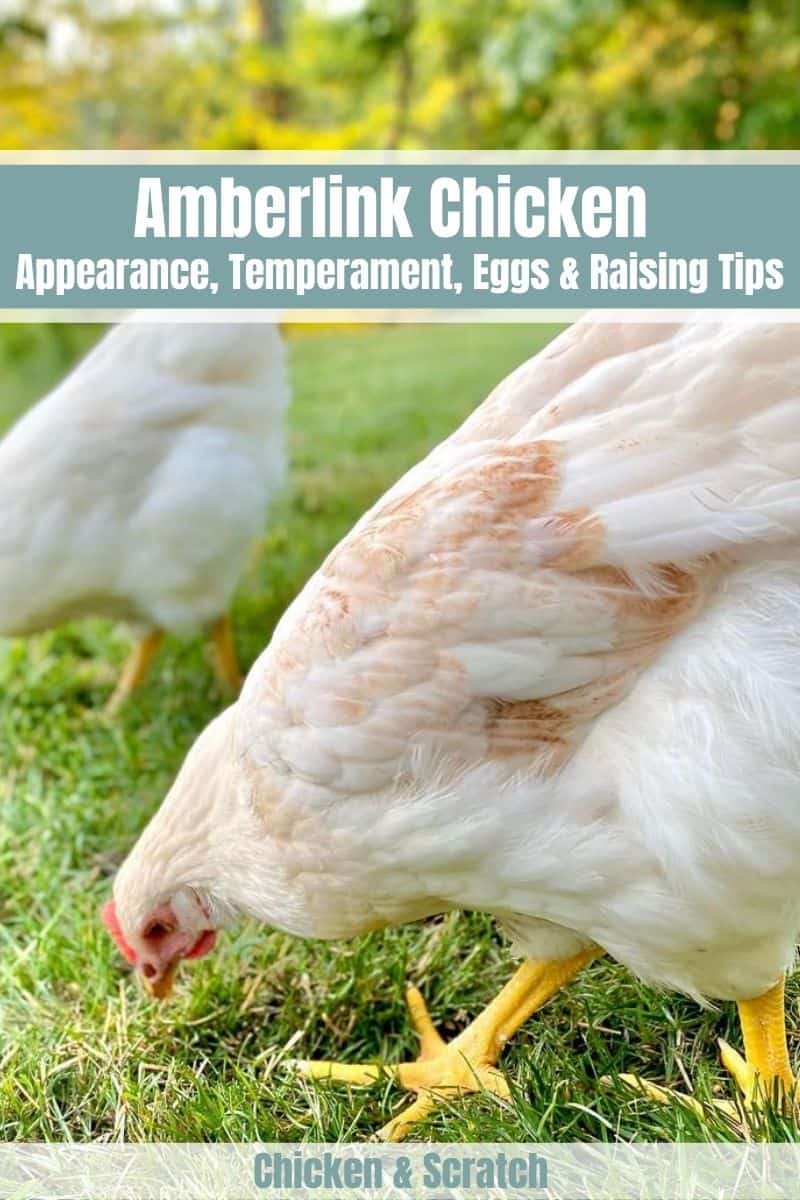You want to give the poultry business a try because maybe you know someone who got cash flowing in smoothly because of these chickens.
But little did you know, you can’t just pick the first chicken you see and call it a day.
No, what you’re looking for shouldn’t be “a” chicken. It must be THE chicken.
And to find it, you should consider so many factors first!
One great example of a chicken breed that fulfills those factors is the Amberlink chicken!
Already a veteran at taking care of your chickens? Maybe you want to change things up a bit?
Well, Amberlinks might just be the thing you’re looking for!
History of Amberlink Chicken
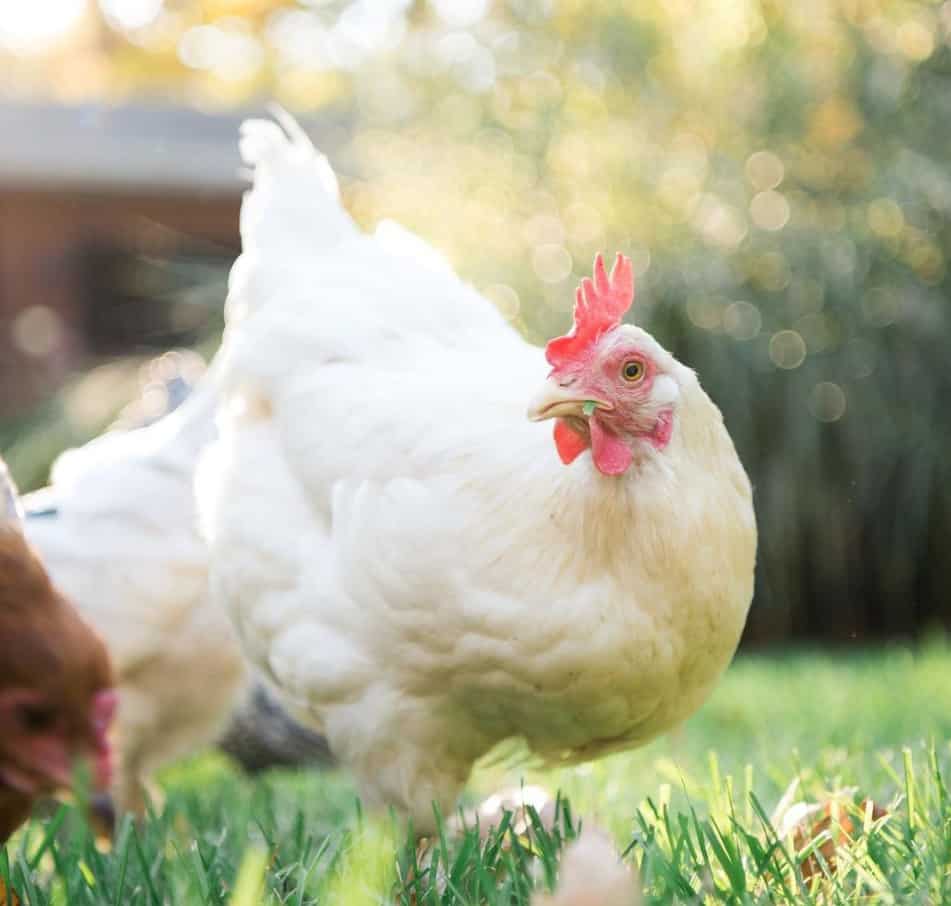
So, the first thing you should know about Amberlinks is they’re hybrid chickens.
“What are hybrid chickens?” you might ask.
Well, the concept’s pretty simple!
Since curiosity is so inherent in human nature, poultry owners from the 1900s wondered what might happen if you crossed one pure-breed chicken to another.
And a hybrid pops out of that!
In this case, Amberlinks were born from breeding Rhode Island Reds to ISA Browns. If there are no ISA Brown chickens, you can have a Plymouth Rock Chicken do the business with the Rhodes instead.
However, you’ll discover that just because you’ve crossed these specific breeds together doesn’t automatically result in an Amberlink.
There’s always that 50/50 chance when it comes to breeding. Maybe you’ll get another Red Island Rhode, an ISA Brown, or a Plymouth Rock. If you’re lucky, maybe an Amberlink might pop out. Who knows?
Genes are always up in the air. The same goes for humans. Maybe your (future) kid might get your nose, or maybe it’ll get your great-grandfather’s hair color.
It’s all up in the air!
Also, since they’re “hybrid,” breeding two Amberlinks together does not guarantee that the offspring will be identical to the parents. As mentioned earlier, genes are intricate yet completely random (unless tampered with).
That’s why Amberlinks aren’t as well-known as its parent breeds in some states, and only a few hatcheries ever sold them.
But that only makes it sought after, just as much as its parents are. Maybe even more!
Because Amberlink is a hybrid breed, it’s safe to say that it most certainly got the best of both worlds when it comes to quality.
However, this quality tends to have drawbacks that you should come to expect from having hybrid chickens under your care, which you’ll come to learn as you continue reading!
What Do They Look Like?
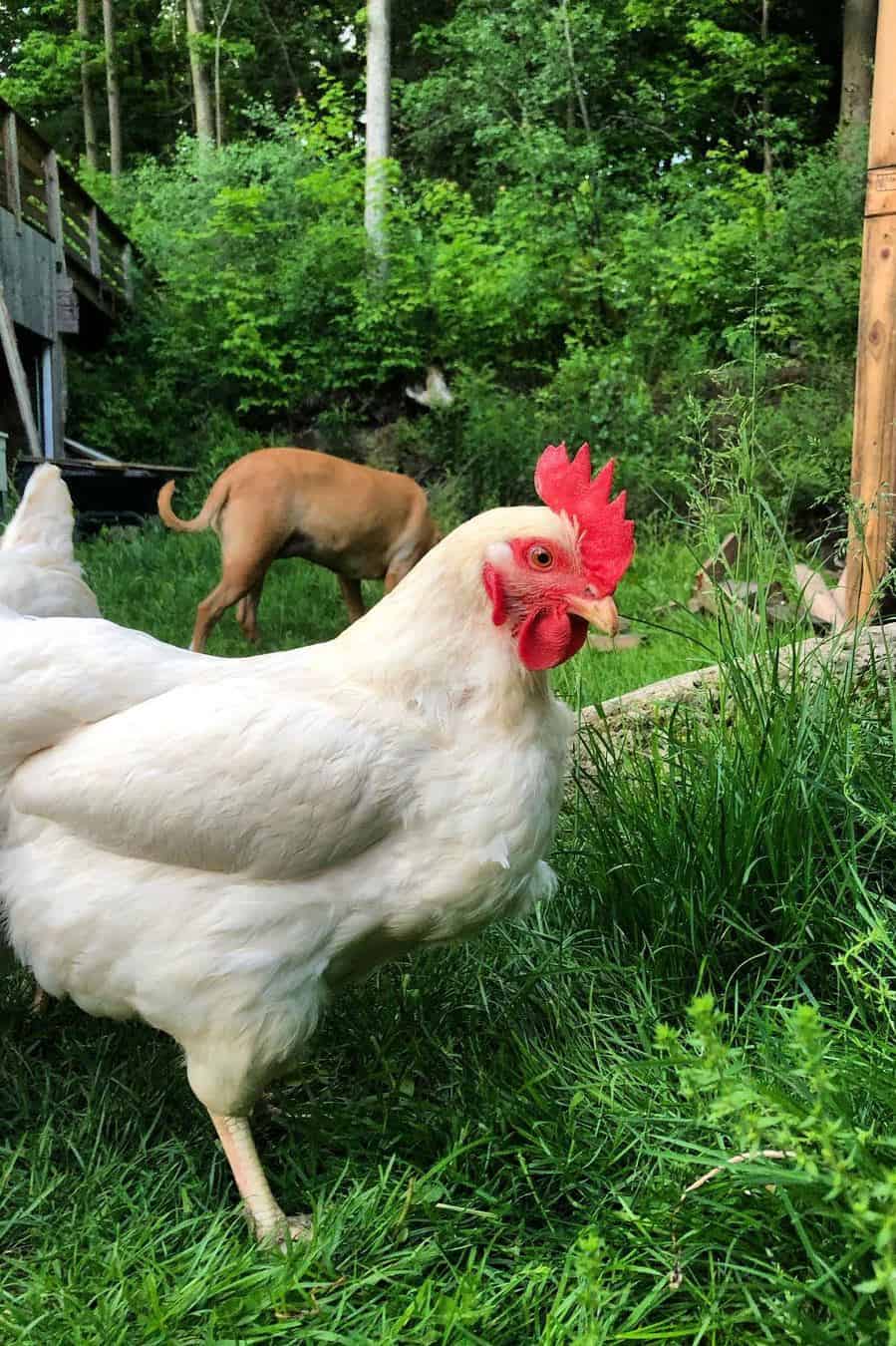
If you look at them from afar, you might mix up Amberlinks from Delawares.
With how white they are as adults, I doubt you’ll be able to tell the difference right away.
But up close is where things change up a little!
Instead of the pure white coat that made Delawares look like puffs of clouds on your field, Amberlinks have flecks of color on some parts of their bodies.
“What if I got them as chicks?” you might ask. “How can I tell them apart?”
Well, to be fair, Amberlink chicks are entirely yellow, whether they’re males or females. So it’s safer if you identify them after a few weeks.
There, you’ll notice how pullets have shades of red or amber flecks on their wings. Sometimes, the color spreads out to the tail region, as well!
As for cockerels, the amber color will be more predominant the older they get. Usually, you’ll see it start from the neck down to the back, with a white undercoat where the amber doesn’t get to.
And that’s why they’re called AMBER links!
So you can say that’s the most distinct trait these chickens have.
As for their weight, well, you’re lucky if your Amberlink managed to retain its Rhode Island Red parent’s hefty mass because Amberlinks normally lean closer to being a medium-sized chicken.
Which is one disadvantage of being a hybrid breed, unfortunately.
Therefore, your roosters can only weigh 6 pounds by the time they mature and 4 pounds for hens (or 5 pounds once they start to produce eggs).
| Color Pattern | Weight | |
| Female | On wings and/or tail | 4-5 pounds |
| Male | From the neck down to the back | 6 pounds
|
Personality and Temperament of Amberlink
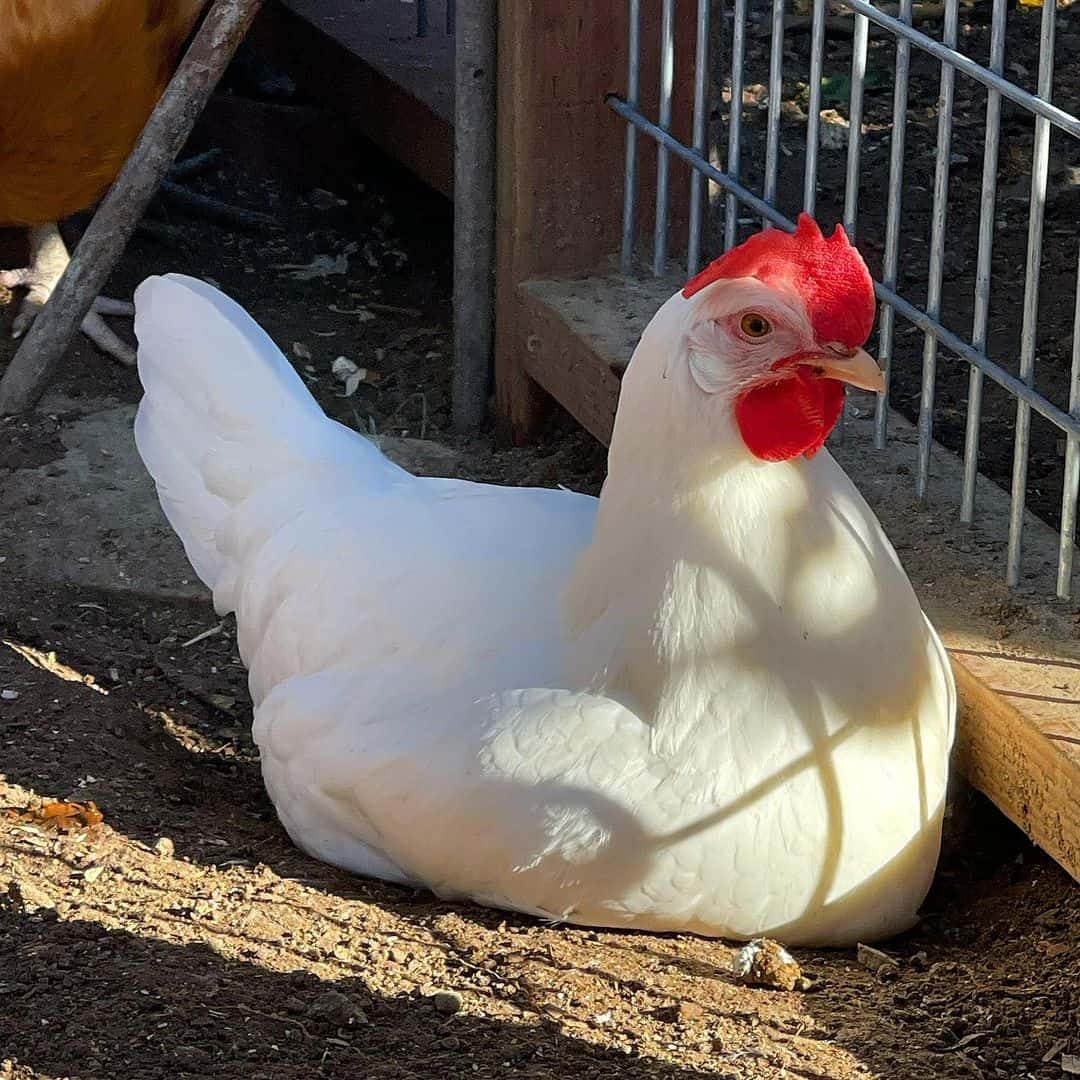
One reason why these guys are perfect for poultry owners who are new to the scene is that Amberlinks are:
- Friendly
- Playful, and
- Great foragers
Be it a fellow chicken or a gentle horse, these little guys know how to get along with animals! Not only that, but they’re great with people, too!
Now, this trait they must’ve gotten from the ISA Brown side of their genes because, although Rhodes can be considered approachable, it’s usually up in the air what kind of personality they have.
Some will say they have sweet Rhodes in their pen, while others will admit theirs is a mean piece of work.
For Amberlinks, you have the assurance any new poultry owner wants to have that these feathery guys won’t turn on you when you have your back turned or mess you up just because it felt like it.
No, what you’ll have in taking care of Amberlinks is guaranteed to be a calming, stress-free experience. It’s what makes them fantastic backyard pets, among other things!
And if you got some feed on you, these little guys will quickly come swarming up to you, asking for a snack. But you don’t have to trouble yourself with budgeting their food. As long as you have a thick field somewhere, Amberlinks will be more than happy to go foraging!
So, if you’re looking for low-maintenance and extremely sweet chickens, Amberlinks are the answer.
Also, it’s worth mentioning that these guys are great for both cold weather AND the heat! Rain or shine, you’ll find Amberlinks to be as lively as ever while the rest of your chickens are not that active in their shelter with so little daylight.
Egg Laying
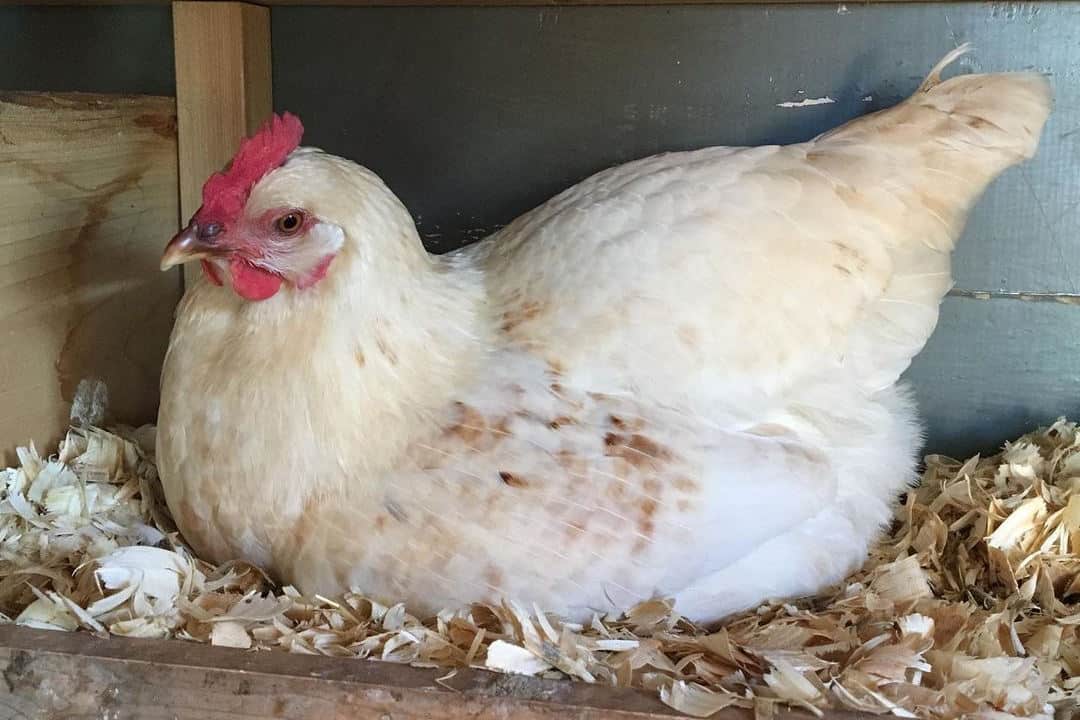
Sure, Amberlink chickens may not be as meaty as Rhode Island Reds, but that doesn’t stop them from being the most active egg layer you’ve ever seen!
Since Amberlinks are hybrid chickens, egg-laying became their best quality yet when they could produce approximately 270 large, brown eggs per year as soon as they reached maturity.
And as mentioned earlier, these guys are active even on cold, dreary days! You can find the hens still looking plump as ever while it proceeds to lay eggs without any issue.
That’s why, if you’re looking to collect eggs for a quick buck after raising a bunch of chicks for over two weeks, then Amberlinks is your best shot at the egg manufacturing business.
Of course, though an Amberlink is a pretty low-maintenance bird for a chicken, you can’t straight-up tell it to start laying eggs for you. In nurturing egg layers, all you need to know is this relationship you have with your hens must be mutual.
To learn how to nurture that kind of relationship, everything you need to know, from how exactly chickens lay eggs down to the aftermath of the egg-laying, can be read here, so you better make use of this well of information wisely!
Needs More Tender Love and Care
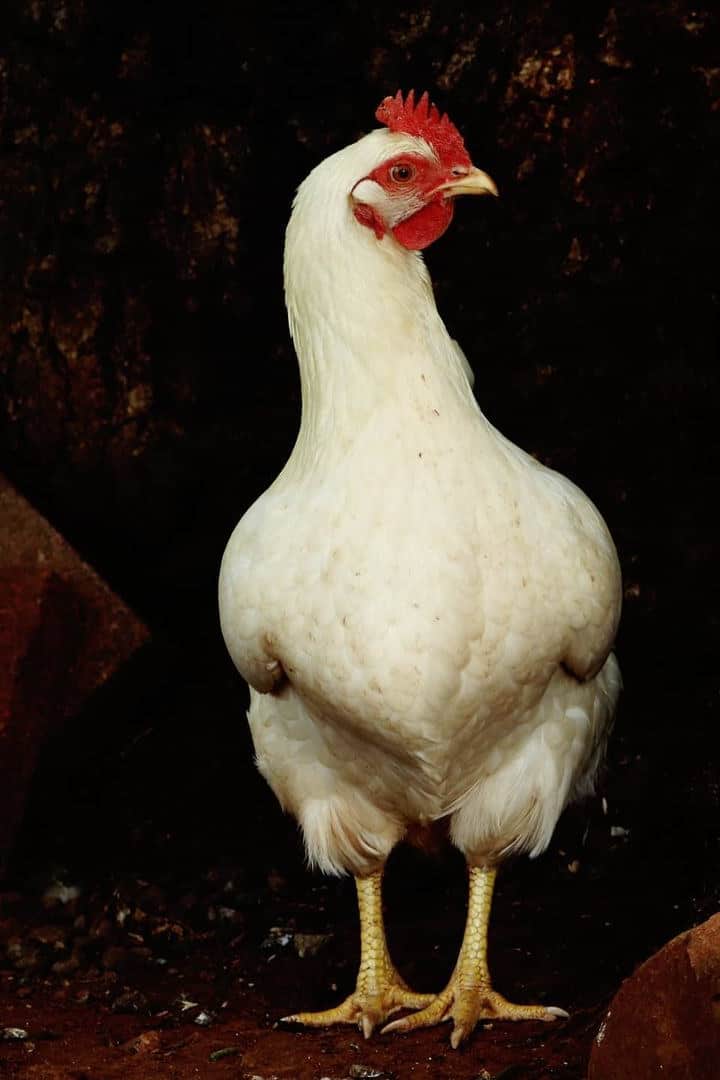
Of course, there’s a bright side to hybrid breeds, but there’s also a huge drop you might fall into by accident when you don’t know what you’re doing.
One thing you should know about first is their short lifespan.
While pure breeds can live up to 8 years if you care for them, hybrids only get to live half of that time. Unfortunately, what makes the Amberlinks a spectacular egg layer will also be killing them slowly.
If you didn’t know yet, chickens laying eggs takes out most of their mental and physical strength. I mean, honestly, squeezing something out already sounds like a lot of work; what more if you have to do it EVERY day?
And because egg-laying is a hybrid chicken’s area of expertise that makes them vulnerable to:
- Protein deficiency
- Egg-laying problems, and
- Extreme stress
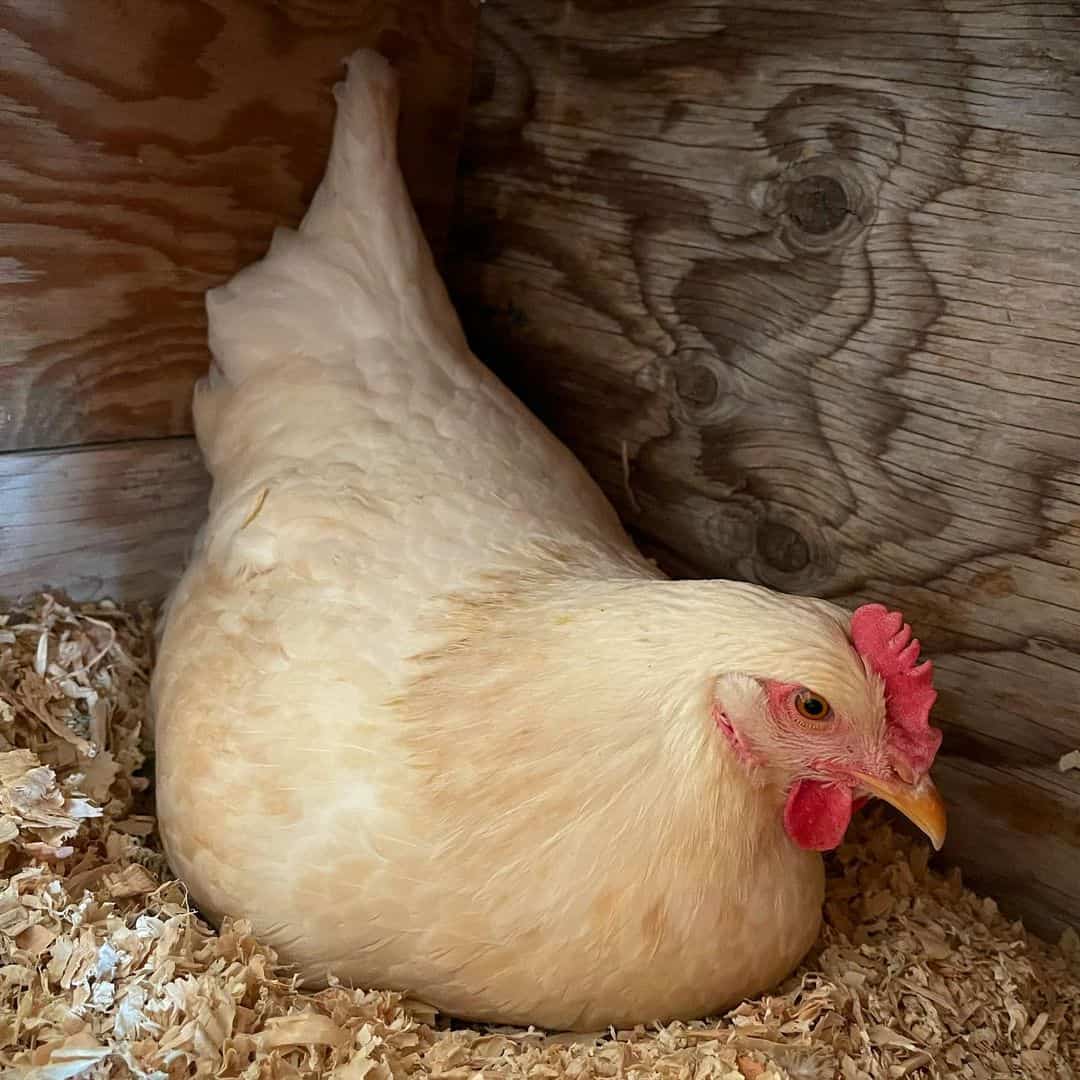
Protein is a key ingredient in egg production. Most of it they can get from foraging (if you have a lush field, that is), but that shouldn’t stop you from providing them feed because feed takes up practically 90% of a chicken’s diet.
Without it, what’s supposed to be Amberlink’s greatest quality might be hindered earlier than expected. So, on top of worrying about egg-laying, Amberlinks will get even more stressed out due to protein deficiency!
But what if you’ve provided them with everything they need? Will it help prolong their life even for another year?
Well, hopefully, it does. However, you must understand: hybrid breeds don’t produce eggs the same way as when they’re only one year old.
Because as soon as Amberlinks hit the one-year milestone, you’ll probably notice how erratic their egg-laying turns out to be, and being erratic brings more problems to the egg-laying process itself.
Egg peritonitis, prolapse, egg binding—these are some of the worst-case scenarios that will grow in frequency the older they get and the longer your Amberlinks continue laying.
Unfortunately, these offer you no control over the matter unless you’re willing to have your chickens operated on through surgery.
And it doesn’t help that chickens are prey animals because, although they look calm most of the time, they already have a lot on their plate!
Birds of prey, foxes, rats—all sorts of predators can pose a threat to them and their eggs. As prey animals, it’s inevitable they’re on high alert when anything looks terrifying in their eyes.
3 Tips for Raising Amberlinks
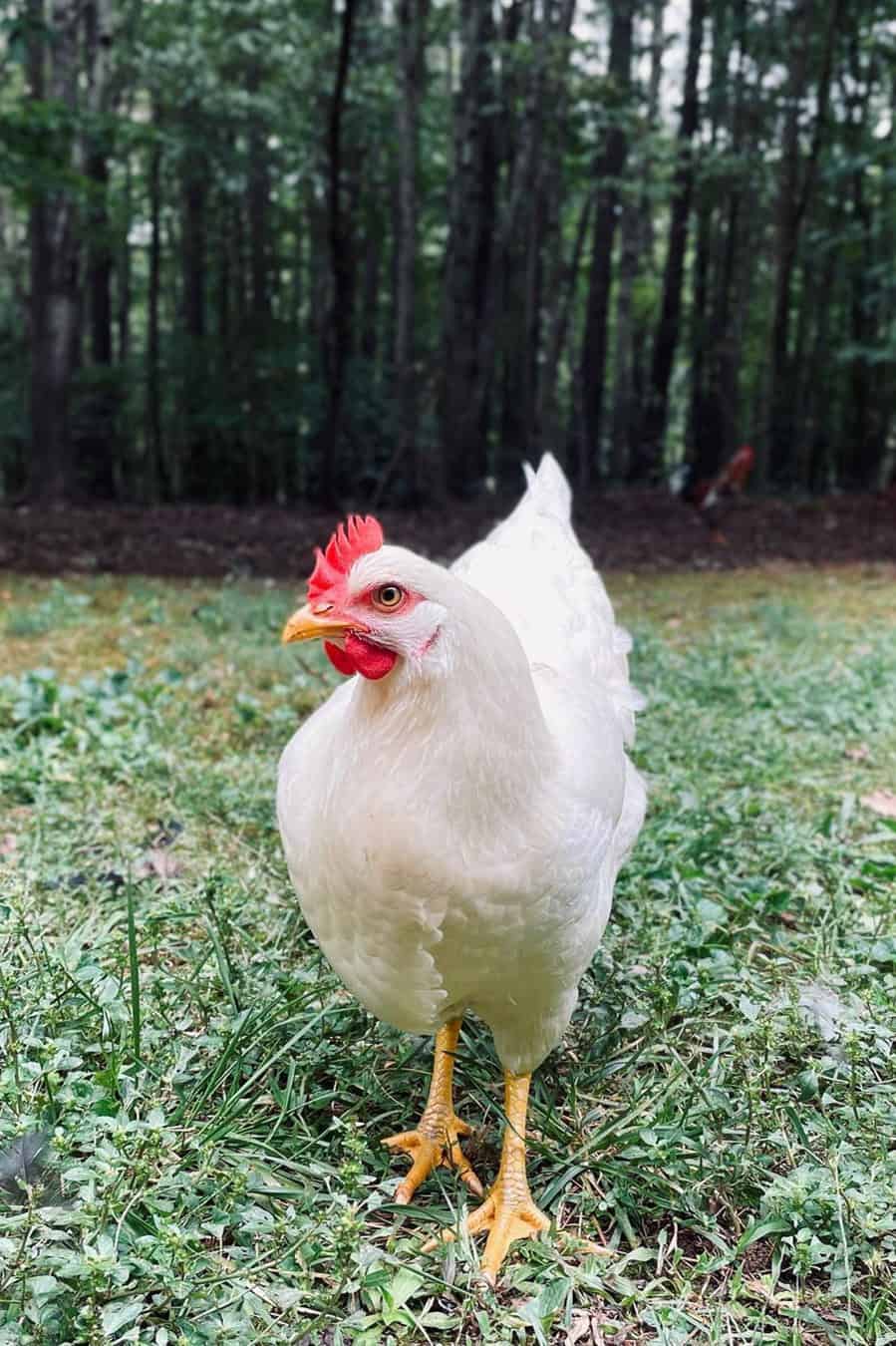
Due to how many outside forces can threaten your chickens, here’s what you can do:
Provide Secure Shelter
Being able to provide shelter is your top priority when taking care of chickens. Here, they can use it as a place where they can both hide and sleep and where they can lay their eggs in peace.
With these functions in mind, it makes sense to have their shelter constructed from solid materials, such as wood or metal. This way, rodents, predators, nor other farm animals have no way to break in so easily.
If you want to be extra sure your chickens are safe, set up a fence around the shelter where the chickens would laze about foraging and decoys (or netting) so nothing can swoop down to steal them away!
Now that you got the outside checked out let’s proceed to the inside of your shelter.
What you want is for your chickens to be warm and dry as they rest or lay eggs because you don’t want pests anywhere near the hens unless you want their egg-laying to be disturbed by them pecking their nests or themselves out of irritation.
Other than promising them comfort, be sure that wherever your designated nesting boxes are for them must give you easy access to their eggs without bothering the hens too much.
Also, lighting is important for a hen’s life!
It considers the light as its clock, so it knows when to lay eggs and when to stop. Of course, once the cold seasons start to come in, little natural lighting will be had, which is a big reason why chickens don’t lay eggs during this time.
However, since Amberlinks are hardy chickens, you bet they can keep laying eggs throughout winter!
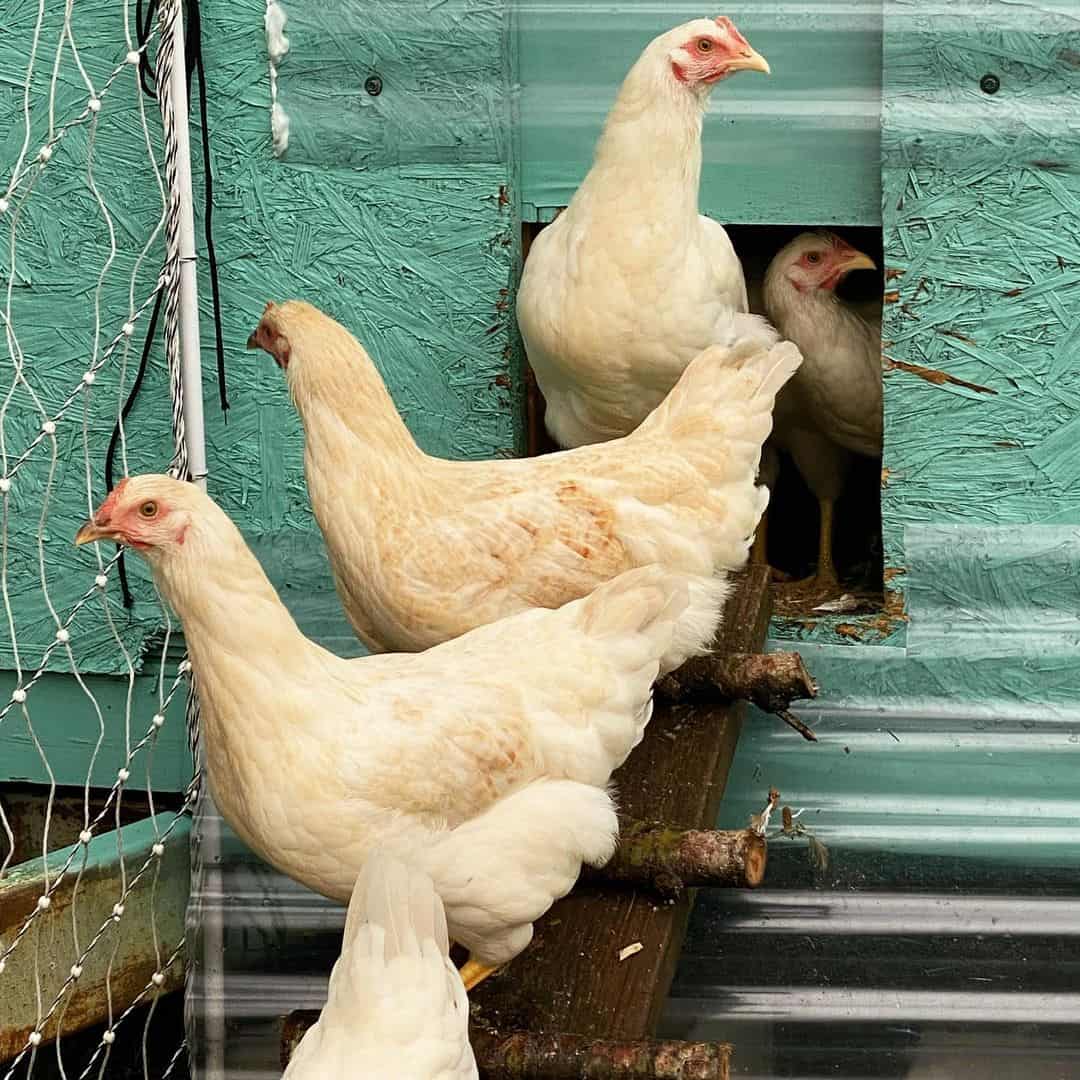
Provide Nutrition
As mentioned multiple times in this article, Amberlinks are hybrid chickens that may have enhanced their egg-laying capabilities; however, this only makes them vulnerable to numerous health problems.
One way for you to help lessen those problems is by providing them with the proper diet they’ll need.
Of course, chicks need a substantial amount of protein for growth. You can provide them with feed that contains between 18 and 24% protein content during their first 6 weeks.
Once they’ve matured, you can drop the content to 16%, with 18% being the highest. This might not sound like much for egg layers, but overfeeding them will only cause another problem, and that’s prolapse.
Consult a Professional
Make sure to drop by the vet to give your chickens a monthly check-up because once they mature, they deserve more attention and care, especially for a hybrid breed like Amberlinks.
If you’re wary of trying out some tips from your fellow chicken owner friends, you should get a second opinion from a vet before anything else so you can be laid out the facts you’ll need to hear when handling chickens.
Along with vets, chicken owners that work from hatcheries can serve as your guide since they’ve been working with chickens far longer than you did! So make sure you take down notes and do your research once you ask them about their diet, their shelter, and so on.
Amberlink Chicken: FAQs
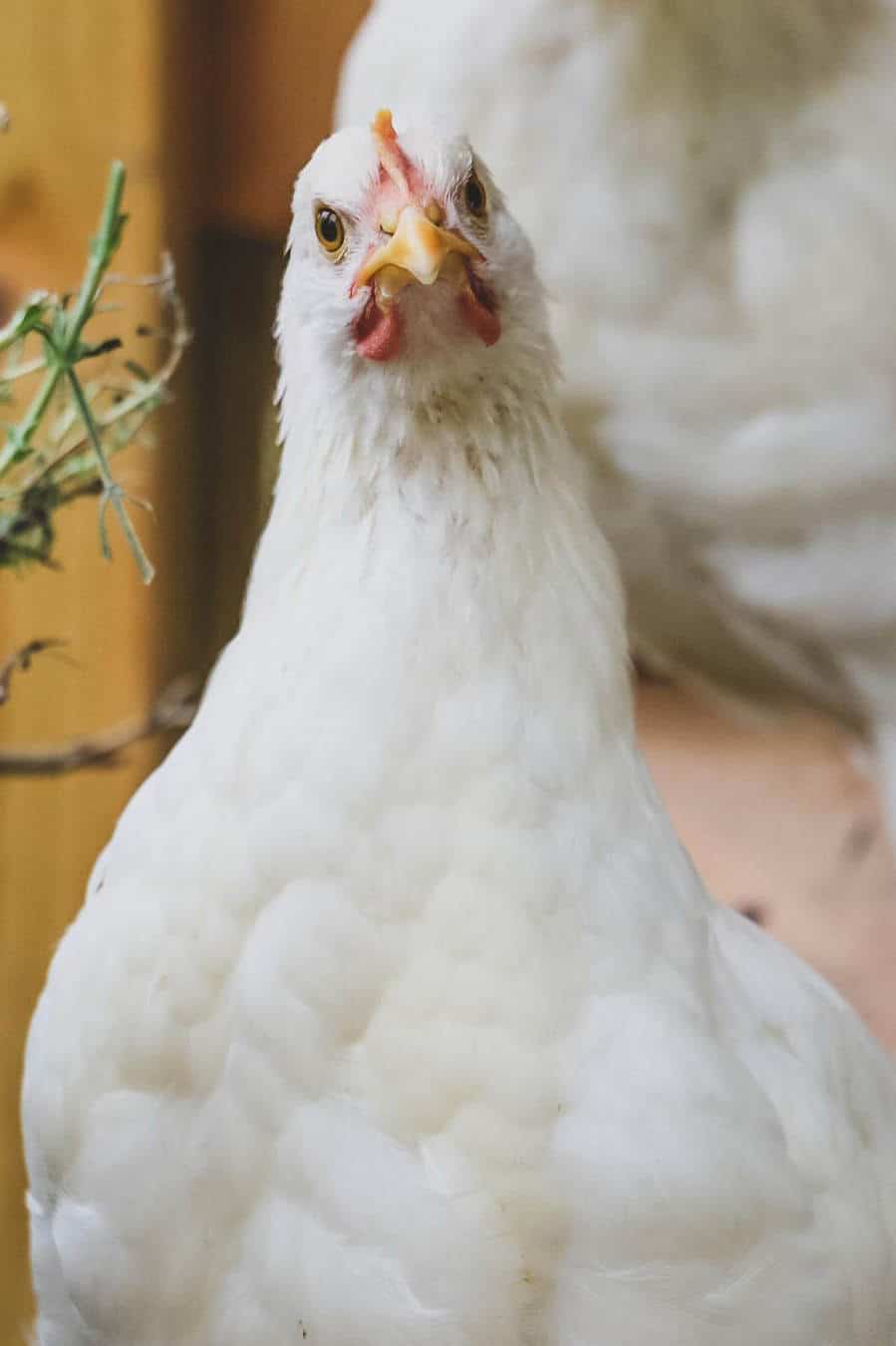
I’m sure you still have more burning questions about Amberlink Chickens. Perhaps these answers will help you.
1. What Breeds Are Amberlink Chickens?
Amberlinks are also known as Amber Sex Link Chickens, and they are hybrids of Rhode Island Reds with either ISA Brown or Plymouth Rock Chickens. Here’s an interesting fact for you; two Amberlinks cannot produce a chick.
2. How Long Do Amberlink Chickens Lay Eggs?
Amberlink chickens start dropping eggs between the 18th and the 21st week. And they are prolific egg layers, too, forking out 270 eggs per year. So if you’re into Amberlink layers, it’s best to snatch them up between the ages of 18 and 19 weeks old, just as they are about to step into their peak laying performance.
Like many laying hens, Amberlinks’ egg production drops by 15-20% every year as they age. So cherish those yummy eggs.
3. What Are Amberlink Chicken Good For?
Amberlink Chickens definitely hold their own in terms of egg production. With numbers like 270 eggs a year, the only place you’ll want your Amberlink chicken is in a nesting box. Poultry farmers also like this bird for its resistance to cold temperatures. Are you living in a cold state and in dire need of eggs? Snatch up a couple of Amberlinks.
Summary
Although Amberlink chickens are probably one of the sweetest breeds you’ve had the pleasure of handling, that doesn’t mean they’re easy to take care of.
You have to be certain you got everything covered already, from shelter to their food. Not only that, but research is a must-have before you decide to take in these chickens because, although they’re sweet, their breed is also demanding.
And it’s your job to provide and provide, and provide.
In return, they’ll give you the eggs they work hard to produce because they can see they’re being cared for by someone passionate about their well-being.
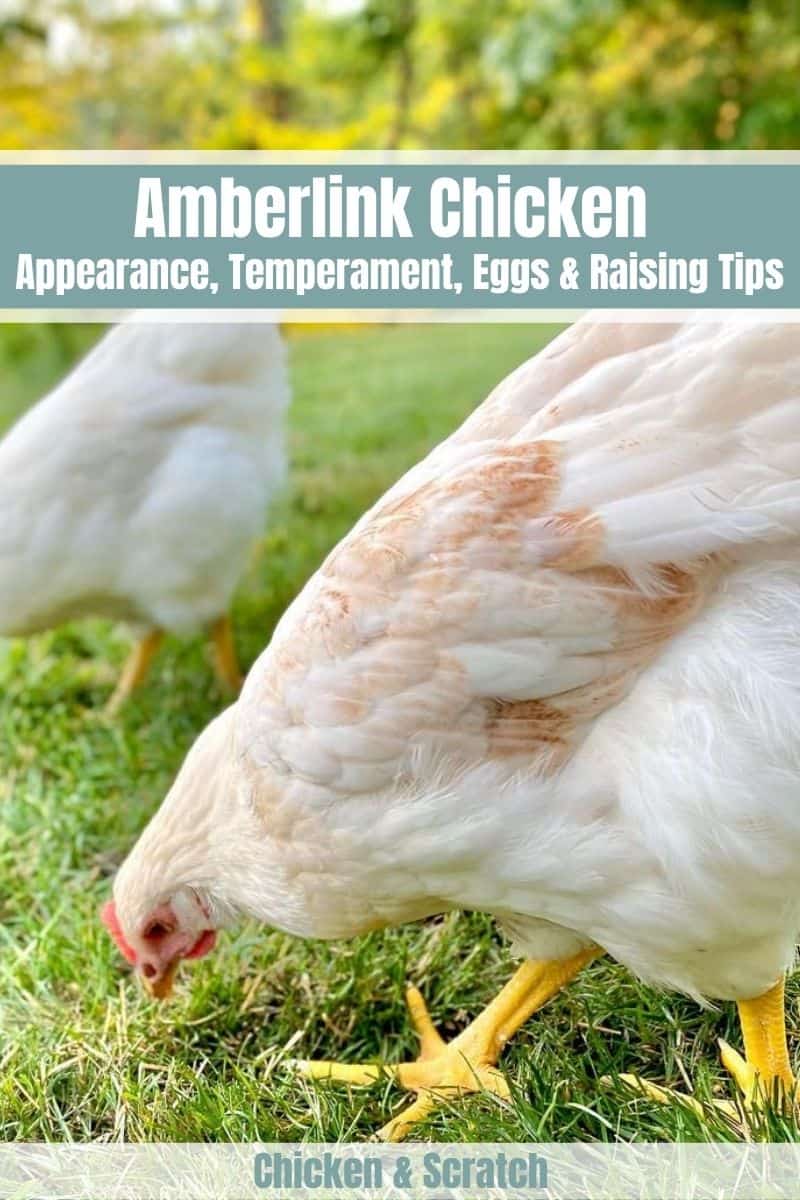

Joseph Hudson has been raising chickens for over 15 years. In 2018, he completed the Agriculture & Natural Resources program at Mt. San Antonio College. He currently raises over 1400 chickens on his 7.5-hectare farm. He keeps sharing his experience on raising healthy and happy chickens on Chicken Scratch The Foundry.
